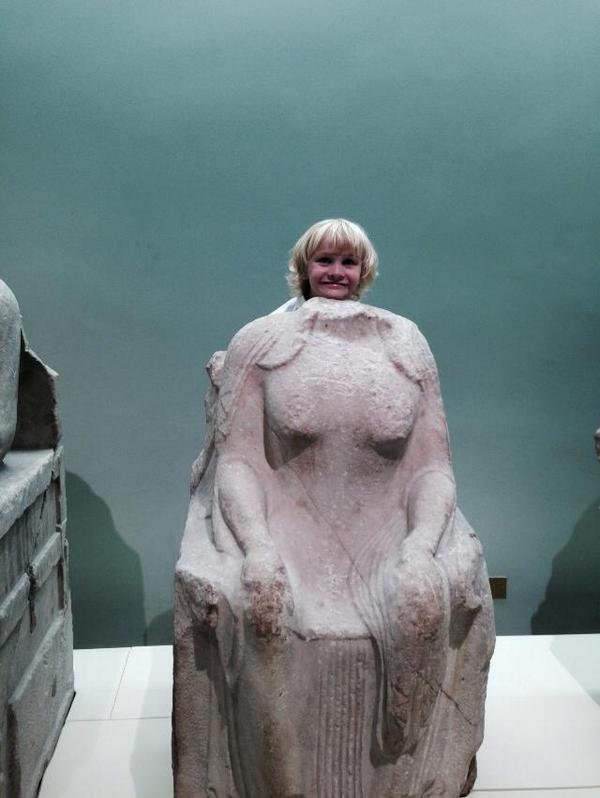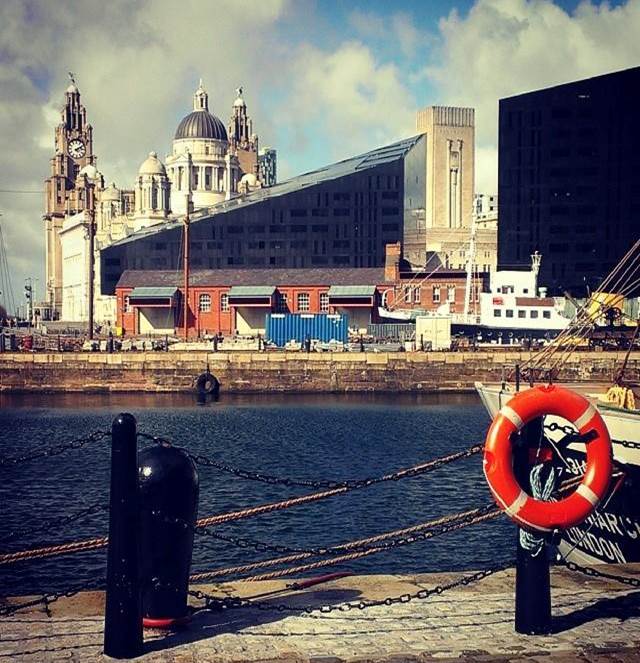Jayne Knight, doctoral candidate in the history of photography, offers inspirational tips on how to keep researching while staying at home.
As a PhD student researching popular photography at the National Science and Media Museum, I have been finding ways to stay connected to my research from home while the collections I am researching are closed. Seeking the silver lining during the enforced lockdown, I have been making the most of the glorious sunshine in the garden by cyanotyping. This has involved digging out the family snaps to give them a new lease of life.

Fig.1. Members of my famiy in indigo blue. Photograph by Jayne Knight, images taken from family negatives.
Cyanotyping has always been a hobby of mine. As a process discovered by scientist and astronomer Sir John Herschel in 1842, I have been continually inspired by the beautifully detailed indigo blue prints of Anna Atkins. Using light to impress botanical specimens and negatives on chemically treated paper retains its charm, time after time. Inspired by my current research into the history of the snapshot photograph, I decided to dig out the cyanotype chemicals and do something with a box of negatives.
Some time ago I gasped in horror at the prospect of a precious box of old photographic negatives being disposed of. My Grandad claimed they had “no further use.” While he has done a wonderful job preserving the family snaps – aged 96 he can still recall the story behind many of them – as a photo historian, I wanted to breathe new life into the negatives.

Fig.2. The box of negatives. Photograph by Jayne Knight.
Assorted in age, size and condition, the negatives are indiscriminately kept in their original processing envelopes, still revealing many details of their material history (Fig.2). Some negatives were printed and ended up in the family photo albums but others seem never to have been printed at all despite being designed for reproduction. One box, containing thousands of negatives, presents bountiful opportunities for cyanotype printing.
Many of the negatives were from the interwar period, when industry giants such as Kodak successfully put cameras in the hands of many. Typical Kodak customers, my Nan’s family took their ‘Brownie’ camera to the seaside, on family holidays, and captured weddings, fun in the garden and wartime farewells. It was a selection of these interwar negatives that I chose to print.

Fig.3. The negatives exposing on chemically sensitised paper. Photograph by Jayne Knight.
Assembling my negatives on chemically-prepared paper, I secured them in a frame. Placing them out in the sun, I watched them expose (Fig.3). Rinsing off the prints in a tray, the emergence of the positive image filled me with joy. Hanging them to dry, the image strengthens in colour, becoming fixed for permanence (Fig.4).

Fig.4. Just exposed and hung to dry. A selection of snaps of my Nan, Grandad, Aunt and my Dad as a child. Photography by Jayne Knight, images taken from family negatives.
In many cases it is the first time that the images have been seen as a positive print. Details unnoticed in the negative come to light. Tonal qualities, in shades of indigo, give the print depth . Printing the positive image brings me closer to the moment captured by the photographer. Fashions, seaside locations and long lost relatives come to life. This will not be the last of the negatives’ revival. When lockdown is lifted, I will take the cyanotype prints to my Grandad to find out the stories behind them and to remind him that an old negative will always have a use.
I am fortunate that my area of research, popular photography, is embedded into everyday life. Photography exists in the home, from family photo albums and shoe boxes of prints and negatives to thousands of digital files and social media inputs. Inspiration is plentiful.










